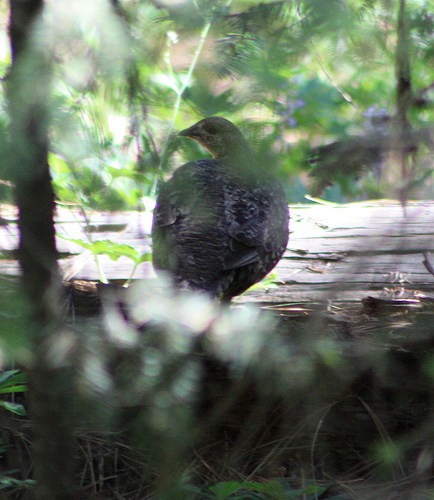
By Dave Workman
Editor-in-Chief
Washington State wildlife managers are heading into the second year of a grouse hunting season change designed to improve survival of hens, with the explanation that the effort “is to help hunters by boosting forest grouse populations.”
The experiment may have national implications, as it may justify later season openers in other states, if upland game managers see problems with hen survival. Across northern tier states at least, hunting forest grouse in the fall is a tradition from the Northeast to the Northwest, whether one hunts with dogs in the New England hardwoods or is a brush buster working the conifer forests of the West.
Starting last year and continuing next month, the annual forest grouse opener has been moved back from Sept. 1 to Sept. 15. To compensate Evergreen State upland bird hunters for the loss of hunting days in September, the season was extended 15 days into January, but some wingshooters are skeptical because it is the rare individual who will hit the woods in the dead of winter, looking for fool hens.
Others, however, seem to think that’s a good time to hunt because of less competition, quieter forests, less foliage to conceal birds and an opportunity to hunt during a period when otherwise there might be no opportunity other than waterfowl or rabbits.
Washington has four grouse species and a four-bird daily bag limit, only three of which may be of the same species. Surveys have apparently revealed that during the first two weeks of the traditional September season, the majority of birds harvested by early season hunters were females. By setting back the opener by two weeks, the goal is to allow for population dispersal, thus increasing the odds of hen survival.
Reports from the Hunting-Washington forum suggest some people have been seeing decent grouse broods despite what appears to have been a late hatch due to a very wet spring.
Still, when the Washington Department of Fish & Wildlife (WDFW) posted a reminder recently on Facebook about the delayed season opener, it got a huge response. More than 160 responses were posted within hours, some supporting, others criticizing the season delay.
Depending upon where one resides, grouse hunting may begin in September or October.
- In Wisconsin, for example, the season opener is Sept. 17 in Zone A with a five-bird daily bag, but Oct. 15 in Zone B with a two-bird limit.
- In New Hampshire, the opener is Oct. 1 with a four-bird daily bag.
- In Ohio, grouse hunting kicks off Oct. 8 and there is a one-bird daily bag limit.
- Maine sets the opener Sept. 24 with a four-bird daily bag limit.
- Michigan has a split season, Sept. 15-Nov. 14 and Dec. 1-Jan. 1. The daily bag limit is five birds in Zones 1 and 2, and three birds in Zone 3. Possession limits are two daily bag limits.
- Idaho grouse hunting opens Aug. 30 and runs through Jan. 31 in Area 1 (northern Panhandle counties) where the daily bag is four birds. The rest of the state is Area 2 (everything south of Latah and Clearwater counties) and is open Aug. 30-Dec. 31, also with a four bird daily bag.
As these examples illustrate, there is no locked-in uniform date for hunting, but Washington’s Sept. 1 opener appears to have been among the earliest, so it may be the concerns about lopsided hen harvest have merit.
At least one Washington hunter also expressed concern about predation, with much of the blame (in his opinion) placed on bobcats.
If Washington management history is any indicator, the Sept. 15 grouse opener may be here to stay for quite some time.



